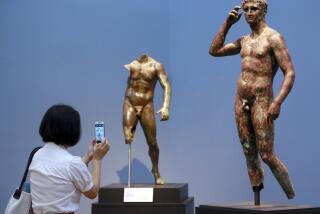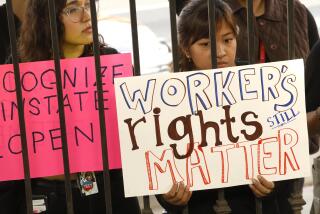Bring Back the Tax Break for Art
- Share via
It’s an unfortunate sign of the times that the J. Paul Getty Museum’s purchase last week of Pontormo’s 16th-Century portrait of a young man reminds us of a remark by the late Wilbur Mills. One day in New York, a person with whom Mills, then chairman of the House Ways and Means Committee, was lunching asked just how important tax policy really is? The congressman pointed out the window and said, “Give me control of this state’s tax policy, and I’ll make that river run back toward Canada.”
The great Mannerist’s painting and the lawmaker’s quip come to mind because, while tax policy may never suspend the laws of nature, it already has changed the course of public art collecting in America. None of America’s great public art collections would be what they are today had they not received an indirect federal subsidy in the form of the tax deduction allowed donors of artworks.
But when Congress reformed the tax code in 1986, it effectively abolished that subsidy by eliminating taxpayers’ ability to deduct the full appreciated value of their gifts to art museums. These changes have had a devastating impact on public collections. In fiscal 1986, there were 43,670 objects with a total value of $143 million donated to museums across the country. Last year, those institutions received only 17,035 objects valued at $67 million, a 63% decline.
The Pontormo portrait, for example, came up for sale because its previous owner felt tax considerations precluded fulfillment of his earlier intention to donate the painting to New York’s Frick Collection, where it had hung since 1970. Thus, the Getty’s $35.2 million purchase--the highest price ever paid for an Old Master painting--was applauded by most other art professionals because it probably prevented an important painting from slipping out of public view and into some private person’s investment portfolio.
These are tough times for public museums. A speculative mania among wealthy investors who regard works of art as the decorative equivalent of pork bellies has sent prices spiraling. At the same time, many of the richest collectors have abandoned public institutions in favor of private museums that are better venues for ego theater than serious connoisseurship. Public museums--which, after all, collect art on behalf of all the rest of us--cannot hope to compete in such an environment without the very modest assistence provided in the old tax code. Congress ought to do the right thing and restore it.
More to Read
The biggest entertainment stories
Get our big stories about Hollywood, film, television, music, arts, culture and more right in your inbox as soon as they publish.
You may occasionally receive promotional content from the Los Angeles Times.










